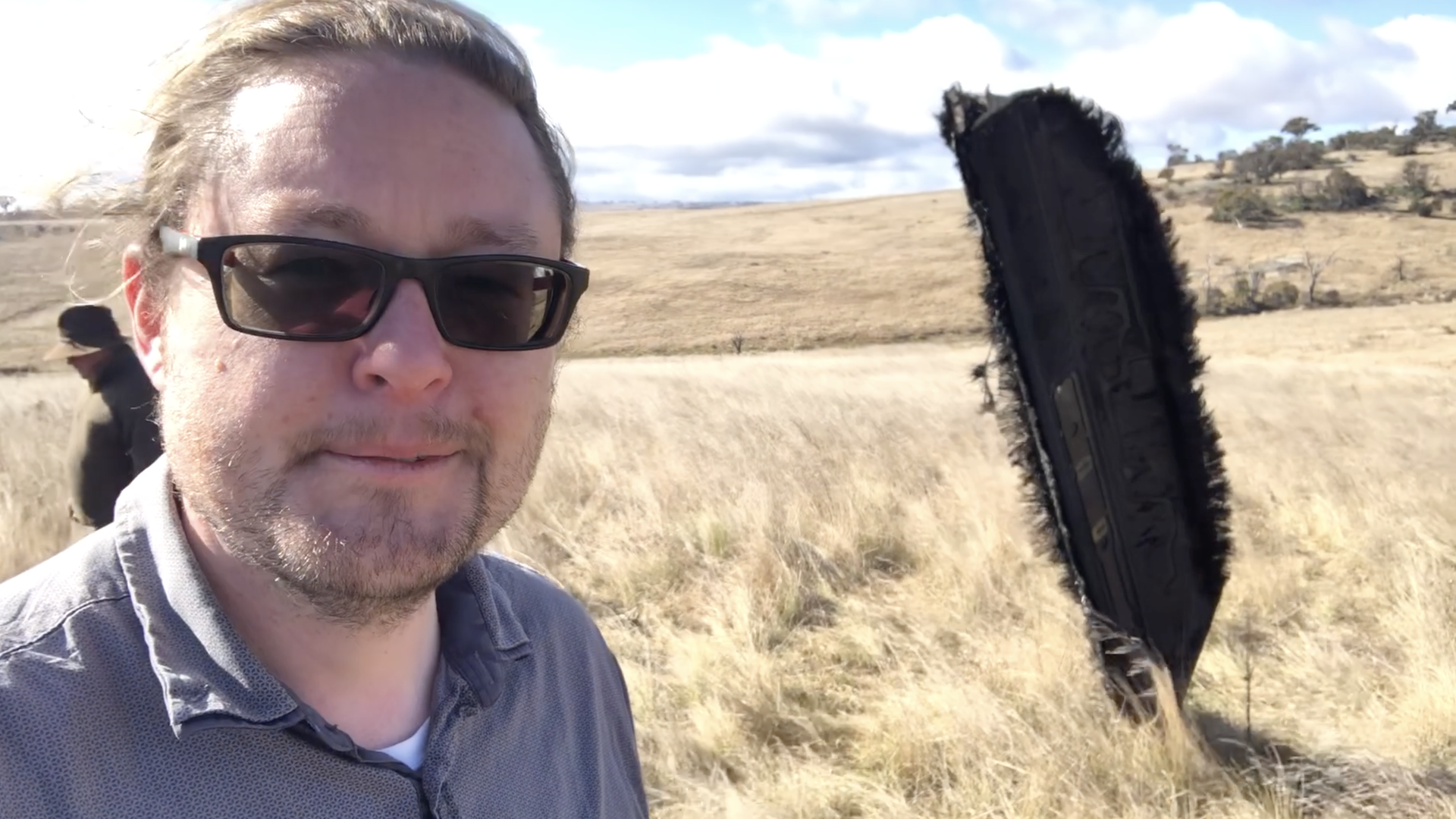Australian astrophysicist says ‘we are lucky’ SpaceX’s Crew-1 debris landed in a rural
“You could roughly match up [pictures of] the debris to parts of the Crew-1 trunk,” he explains. “We also knew the trunk re-entered over Australia, both due to tracking and public reports and sightings on 9 July, which happened to go over the area it was found.”
Tracking these pieces is vitally important, as there are several others in orbit, and they could pose a danger to people and property. As Tucker points out, “we are lucky that this landed in a relatively rural area.”
A space debris investigation
Tucker first went to investigate the space debris on Sunday, July 31, after sheep farmers Mick Miners and Jock Wallace each respectively found a piece of debris on their farms in southern New South Wales, Australia. The debris reentered Earth’s atmosphere at 7 am on July 9, meaning it had been orbiting Earth for 20 months — SpaceX’s first fully operational astronaut mission, Crew- 1, launched back in November 2020.
Tucker says he often gets calls about potential space debris that turn out to be old used ground machinery. There was a sense of excitement when he came to the crash site of SpaceX’s Crew-1 debris. “This was my first time actually checking out space junk like this, and in person,” he says. “It is quite rare to have pieces land on the ground, and moreover, land so (relatively) close to where I was, allowing me to investigate.”
While SpaceX has been made aware of the debris, it turns out that SpaceX wasn’t Tucker’s first phone call after identifying the space debris as part of SpaceX’s Crew-1 capsule trunk — an unpressurized cargo hold that also supports the capsule during launch.

Dr. Brad Tucker standing next to the Crew-1 debris.
Image provided by Brad Tucker
“After checking it out, I notified the Australian Space Agency,” he explains. “It is in their jurisdiction and duties to return objects and sort out the process. I told them of my assessment and the info, and subsequently they went out to start the process. They had to work with the Federal Aviation Authority (FAA) in the U.S., which manages flights, including spaceflight.”
Since then, SpaceX has announced it will send a team to investigate the debris. During a press conference for Crew-5, live-streamed on NASA TV on August 4, Benjamin Reed, senior director of SpaceX’s human spaceflight program, told reporters that the company is working with the FAA, the U.S. State Department, and the Australian Space Agency to coordinate its own investigation into the debris. He also highlighted the fact that no people or property were damaged by the falling space machinery.
Can falling SpaceX debris pose a danger to people?
Much was made last month of China’s uncontrolled Long March 5B rocket stage re-entry. That piece of space debris ultimately crashed into the Indian Ocean, away from populated areas. Even so, China’s space agency criticism from the global community for allowing such a large object to make an uncontrolled re-entry. Though SpaceX’s capsule trunk likely weighs a lot less than the 21-ton Long March 5B rocket core stage, there’s no denying that it could cause serious damage depending on where it lands.
“We are lucky that this landed in a relatively rural area,” Tucker told IE. “Along the path of the trunk were many towns, including a popular ski destination that was busy on the Saturday morning when the trunk re-entered. While I am not worried about it as a problem to lose sleep over, it just goes to show how much work the community has to do in order to deal with the growing space junk problem.”

Some have compared the Crew-1 debris to the monolith from 2001: A Space Odyssey.
Image provided by Brad Tucker
SpaceX, in particular, will increasingly have to deal with these types of issues as it continues to launch more missions year after year — the company recently launched its 32nd mission of the year, beating its own record for the number of launches in a calendar year. Right now, “there are other trunks from all the other Crew missions — Crew-2,3, 4 as well as the Inspiration-4 private mission and Axiom-1 mission — that will eventually come back to Earth in a similar fashion,” Tucker explains. He hopes those pieces land in the ocean rather than over land, as was the case with the piece of Crew-1.
More pieces of Crew-1 will likely also turn up in the coming months, as people in the area are now aware that the trunk broke up into many pieces that scattered over the region. As SpaceX’s Reed pointed out in the Crew-5 press conference, SpaceX uses models that are approved by the FAA and NASA, suggesting they plan where debris will fall. “It’s part of the process that we do with NASA and with FAA,” he said. “We use models that are ultimately approved to predict and plan for these things.” Still, with NASA having already contracted SpaceX for ISS astronaut missions up to at least Crew-9, we’ll likely see more SpaceX debris raining down from orbit in the coming years.
Let’s hope those models are as accurate as the ones used to coordinate Falcon 9’s insanely precise first-stage booster landings.
Read More: Australian astrophysicist says ‘we are lucky’ SpaceX’s Crew-1 debris landed in a rural

